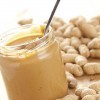Abstract
Peanut butter is a staple in the diets of many children, but it can cause serious problems for those with a peanut allergy. Knowing how to identify foods that contain peanuts, what to pack for school lunches, and how to reduce accidental contact with peanuts will help keep children with peanut allergies safe when they are away from home. This 5-page fact sheet was written by Sarah Schmidt, Karla Shelnutt, and Gail Kauwell, and published by the UF Department of Family Youth and Community Sciences, February 2013.
References
Centers for Disease Control and Prevention. (2012). Food allergies in school. Retrieved from http://www.cdc.gov/healthyyouth/foodallergies/
The Food Allergy and Anaphylaxis Network. (2011). How to read a label for a peanut-free diet. Retrieved from http://www.foodallergy.org/files/HTRLsheet_2011.pdf
The Food Allergy and Anaphylaxis Network. (2012). Peanuts. Retrieved from http://www.foodallergy.org/page/peanut-allergy
Mayo Clinic. (2012). Peanut allergy. Retrieved from http://www.mayoclinic.com/health/peanut-allergy/DS00710
National Institute of Allergy and Infectious Diseases. (2010). Food allergy: An overview. U.S. Department of Health and Human Services. National Institutes of Health. NIH Publication No. 11-5518. Retrieved from http://www.niaid.nih.gov/topics/foodallergy/documents/foodallergy.pdf
Sicherer, S. H., Muñoz-Furlong, A., Godbold, J. H., & Sampson, H. A. (2010). US prevalence of self-reported peanut, tree nut, and sesame allergy: 11-year follow-up. Journal of Allergy and Clinical Immunology 125 (6):1322-26. https://doi.org/10.1016/j.jaci.2010.03.029
Stein, K. (2009). Are food allergies on the rise, or is it misdiagnosis? JADA 109(11):1832-37. https://doi.org/10.1016/j.jada.2009.09.019
Unless otherwise specified, articles published in the EDIS journal after January 1, 2024 are licensed under a Creative Commons Attribution-NonCommercial-NoDerivs 4.0 International (CC BY-NC-ND 4.0) license.

